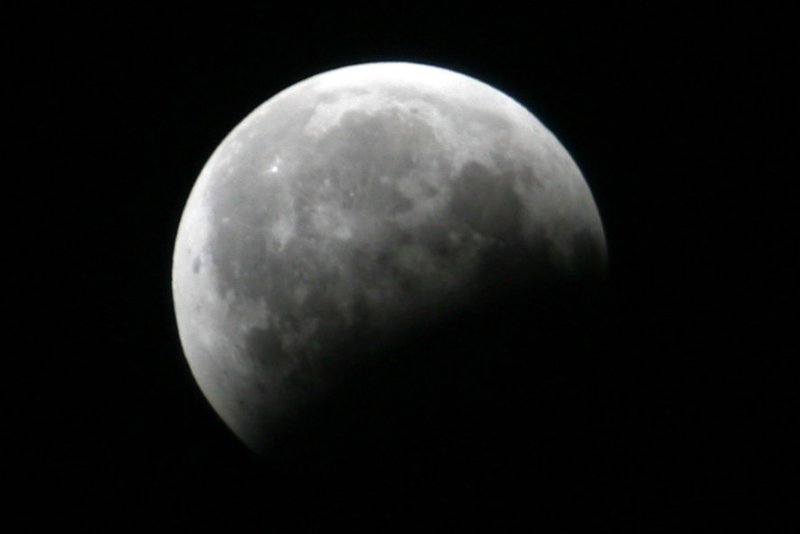The earth's shadow passes over the moon during a partial lunar eclipse over Gaza City, Gaza on Aug. 16, 2008. (File/UPI Photo/Ismael Mohamad) |
License Photo
(UPI) -- The full moon on Friday night will feature the Earth's shadow on the moon, making it a penumbral lunar eclipse.
During the penumbral lunar eclipse, the portion of the Earth's shadow falling across the moon will cause slight dimming on the moon’s lower half. This is different from a total eclipse, when the moon would be darkened completely.
When the moon passes through the Earth's penumbral shadow, the darkened portion of the moon can redden. The red tint is the result of the sun's light being filtered through the Earth's atmosphere, eliminating blue light and leaving the red.
After tonight’s lunar eclipse, there won’t be another one until April 2014 when the annual solar eclipse occurs.
"Unusual shading on the southern half of the moon should be fairly plain," said Sky and Telescope's Alan MacRobert. "Look for the penumbral shadow to move from (celestial) east to west across the disc. You might be able to detect lesser traces of penumbral shading for about 45 minutes before and after mid-eclipse."
Astronomy Now offered detailed information about observing the penumbral lunar eclipse in North America.
The observing circumstances are not ideal for much of the U.S., and the best visibility will be from further north and east. In New York, the moon rises at 5:58 p.m. EDT, 10 minutes after the eclipse starts. By mid-eclipse at 8 p.m. the moon will be 20 degrees high due east, climbing to 42 degrees in the east-south-east by the eclipse end around 10 p.m. In Miami, at mid-eclipse the moon will be 16 degrees up, climbing to 40 degrees by 10 p.m.
In Chicago, the moon rises at 5:54 p.m. CDT and so the start of the eclipse will not be visible. Mid-eclipse occurs at 6:50 p.m. but the moon will only be 10 degrees up with evening twilight hindering visibility. But the moon will climb to 31 degrees by 9 p.m. CDT when the eclipse ends.
The west coast is out of luck. In Los Angeles, the moon will still be low on the local horizon, and fewer than 10 degrees up by the end of the eclipse at 7 p.m. PDT.















